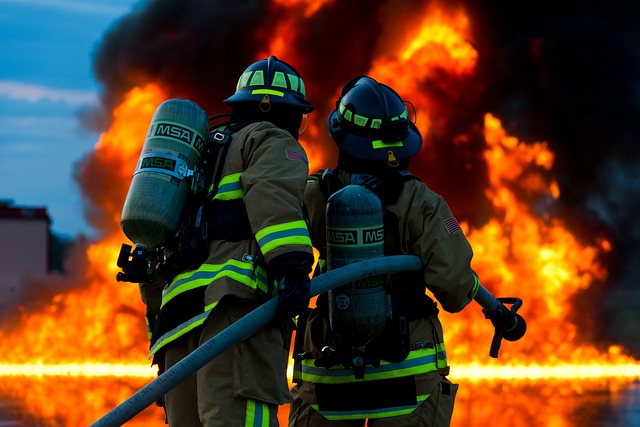Share This Article:

Safety at Work
Washington, DC (WorkersCompensation.com) – Legislation introduced in Congress would roll back federal rules that prevent wildland firefighters from wearing respiratory protection.
On Monday, U.S. Sens. Alex Padilla, D-Calif., co-chair of the bipartisan Senate Wildfire Caucus, Adam Schiff, D-Calif., John Curtis, R-Utah, and Tim Sheehy, R-Mont., introduced the Health Lungs for Heroes Act that would create the first-ever respiratory protection standards for federal firefighters. For decades, federal firefighters have been prohibited from wearing respiratory protections despite evidence that wildfire smoke poses significant health risks to firefighters. The legislation would ensure the U.S. Forest Service (USFS), and the U.S. Department of the Interior (DOI) take steps to provide firefighter protections.
“Wildland firefighters deploy in the most extreme conditions to combat wildfires, preserve vital ecosystems, and save lives,” Padilla said. “These heroic men and women should not be forced to face long-term illness or premature death due to smoke exposure on the job. Our bill ensures that firefighters are given the critical protective equipment they need to stay healthy during the long, grueling hours on the front lines protecting us all.”
The legislation would codify guidance issued by USFS in 2025 that acknowledged respiratory protections can protect firefighters from harmful particles in wildfire smoke. Federal firefighters often work 16-hour shifts in grueling conditions, often inhaling toxic smoke. Studies have shown that exposure to wildfire smoke is linked to adverse health impacts, including more than a dozen kinds of cancers. On average, firefighters have a life expectancy 10 year shorter than other adults due to lung damage.
“Our wildland firefighters already face some of the most grueling, dangerous conditions imaginable,” Curtis said. “The least we can do is ensure access to materials that will protect them from the long-term health consequences of breathing toxic smoke. This bill ensures we bring common sense, science, and basic decency to how we equip our firefighters.”
The legislation would direct USFS and DOI to work with the National Institute for Occupational Safety and Health (NIOSH) and OSHA to develop respiratory protections that take into account the needs of wildland firefighters, officials said. Additionally, the legislation would require the agencies to provide that protection to wildland firefighters and require their use when smoke exposure exceeds limits determined by NIOSH and OSHA as dangerous.
The bill is supported by several national firefighter and safety organizations, including the National Federation of Federal Employees (NFFE), the National Fire Protection Association (NFPA), the International Association of Firefighters (IAFF), Grassroots Wildland Firefighters, FireGen Collaborative, and former U.S. Fire Administrator Dr. Lori Moore-Merrell.
“As wildfire seasons grow longer and more dangerous, our federal wildland firefighters deserve safety standards that reflect the extreme conditions they face," Randy Erwin, National President, National Federation of Federal Employees, said. “Equally important is the bill’s mandate to determine appropriate equipment and regularly review and update all relevant PPE standards. This ensures that respiratory protection keeps pace with evolving science, operational demands, and the realities of modern fire behavior. Wildland firefighters risk their lives to protect our communities. Establishing clear exposure parameters and reliable respiratory protection is the least we owe to those who stand between our nation and catastrophic fire.”
According to the U.S. Bureau of Labor Statistics, firefighters face many dangers on the job, the most commonly fatal of which are fires/explosions and transportation incidents. For nonfatal injuries, the most common cause is overexertion leading to sprains, strains and muscular pains. In 2023, the BLS reported 2.4 firefighters were injured per every 100 full-time workers.
However, the annual number of fatalities can vary, the bureau said. In 2013, a report showed the leading cause of death was transportation, while in 2018, fires and explosions caused more than 64 percent of fatalities. Between 2013 and 2018, 206 firefighters died on the job.
According to the American Lung Association, firefighters are more likely to develop lung cancer because of the carcinogens they inhale. Combustion exposes firefighters to hazardous levels of carbon monoxide, benzene, hydrogen cyanide, asbestos and polycyclic aromatic hydrocarbons. Climate change is increasing the number and intensity of wildfires, the organization said, which can increase the number of houses, debris and cars that catch fire when out-of-control forest fires reach urban areas.
AI california case file caselaw case management case management focus claims compensability compliance compliance corner courts covid do you know the rule exclusive remedy florida glossary check Healthcare hr homeroom insurance insurers iowa kentucky leadership medical NCCI new jersey new york ohio pennsylvania roadmap Safety safety at work state info tech technology violence WDYT west virginia what do you think women's history women's history month workers' comp 101 workers' recovery Workplace Safety Workplace Violence
Read Also
About The Author
About The Author
-
Liz Carey
Liz Carey has worked as a writer, reporter and editor for nearly 25 years. First, as an investigative reporter for Gannett and later as the Vice President of a local Chamber of Commerce, Carey has covered everything from local government to the statehouse to the aerospace industry. Her work as a reporter, as well as her work in the community, have led her to become an advocate for the working poor, as well as the small business owner.
Read More
- Nov 19, 2025
- Frank Ferreri
- Nov 18, 2025
- Frank Ferreri
- Nov 18, 2025
- Anne Llewellyn
- Nov 17, 2025
- Claire Muselman
- Nov 17, 2025
- Chris Parker
- Nov 17, 2025
- Frank Ferreri




